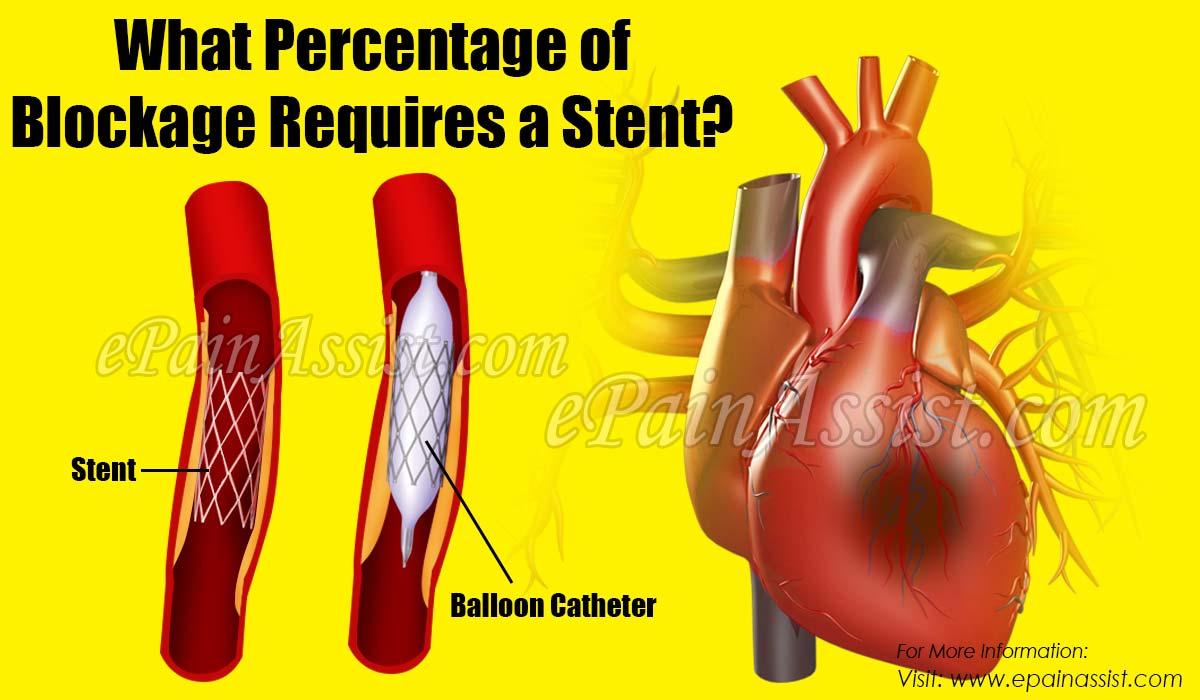Whenever coronary arteries of patients become narrow, they fail to supply adequate amount of oxygen rich blood to the heart. This inadequate blood supply particularly takes place when heart beats at a faster rate, like for instance when a person does any physical exercise. Decrease in the flow of blood initially does not cause any symptom related to coronary artery disease. However, as the plaque formation continues in the coronary arteries of a person, he may develop various signs related to coronary artery disease, which include the angina or chest pain, heart attack and breathing shortness.

What Percentage of Blockage Requires a Stent?
Stenting is Essential When Blockage of the Artery Exceeds 70%
Cardiologists usually consider the problem of artery blockage as severe when it exceeds 70 percent. In this situation, doctors recommend for the placement of stents via angioplasty method to prevent or reduce the blockage in the arteries.
Need for Stent When Plaque Forms in Heart’s Blood Vessels
Stents placement becomes very much essential when the formation of plaque causes blockage in the blood vessels of the heart. Plaque consists of cholesterol and other harmful substances, which attach to the vessel walls.
Helpful in Emergency Procedures
Moreover, doctors recommend for stents during any of the emergency procedures. This type of procedure becomes common in case blockage takes place in artery of the patient’s heart i.e. in the coronary artery. In this case, doctors use a technique of balloon angioplasty to allow opening of the blockage and finally, place a stent within the artery to keep the blood vessel in open state.
Best Way to Deal with Atherosclerosis
Cardiologists also perform the process of stenting and angioplasty to deal with a complicated heart problem or coronary artery problem referred as atherosclerosis. In this case, fatty and cholesterol filled plaques buildup very slowly in the blood vessels of the patients’ heart.
When Treatment is Impossible via Medications
In simple words, stenting and angioplasty may act as treatment options in all those individuals, for whom medications and changes in the lifestyle become insufficient to bring the necessary improvements in the cardiac health or in patients dealing with angina and severe heart problems, along with the heart attack.
Benefits of Stent in Patients with Heart Blockage Problems
Stenting procedure has a major role to bring a positive influence in the quality of life lead by individuals suffering from the problem of heart blockage. Prime benefits of the treatment procedure are-
Emergency: Serves as a Lifesaver. The combination of stenting and angioplasty may prove to be a lifesaver when doctors perform the procedure just after a patient suffers from a heart attack.
Reduce Muscle Damage: Improves the blood flow and avoid heart muscle damages.
Better Blood Flow: Stenting procedure improves the blood flow and avoids further damages to the heart muscles. In addition, it brings improvement in the heart disease symptoms and gives immediate benefits.
Overview of Stents
Stents are small size of tube, which cardiologists/heart surgeons insert in the blocked passageway or artery to keep it in the open condition. The prime role of this stent is to restore the flow of various fluids including the blood based on its placements.
Stents mainly consist of plastic or metal, while stent grafts come in a relatively large size and are useful in case of large arteries. Stent grafts consist of specialized fabrics. In addition, nowadays, doctors also recommend for stents coated with medication or drug to prevent the closing of any blocked artery.
Types of Stents
Stents are available in five following categories-
- Bare Metal Stents.
- Drug-Eluting Stents.
- Bio-engineered Stents.
- Bioresorbable Vascular Scaffold.
- Dual Therapy Stents.
Also Read:
